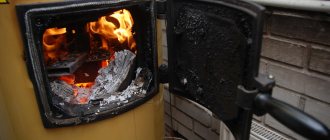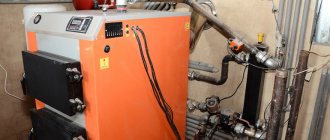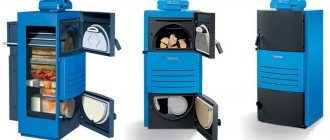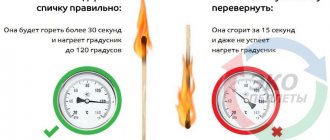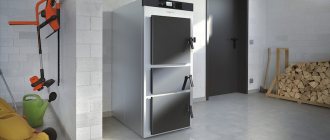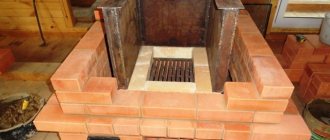Coal
Coal is a traditional raw material for solid fuel boilers. It burns for a long time and has good heat transfer, but only if it is correctly placed in the combustion chamber, properly ignited and subsequently maintained.
Coal selection
To increase the efficiency of the boiler and extend its service life, it is necessary to take into account the manufacturer’s recommendations for choosing the grade of coal. Usually the name of the brand and its fraction are indicated in the technical data sheet of the device. Each grade has a different ratio of carbon and impurities, different humidity, structure, strength and age of formation.
The most popular types of coal for solid fuel boilers:
- Coal. The heat transfer of the fuel is 5500 kcal/kg. The average percentage of carbon and ash is 75%/3%. Suitable for igniting most classic boiler models.
- Anthracite. Specific heat indicators are 9000 kcal/hour. The percentage of carbon is no more than 7%. The disadvantage of this variety is difficulty in ignition and extremely high combustion temperature.
The most popular and convenient for ignition is long-flame coal. This universal fuel for all types of boilers ignites quickly, burns for a long time and releases a large amount of energy.
Brown coal and lingite can be found on sale. However, these varieties are recommended for use only on an industrial scale due to the large amount of ash residue and high humidity levels.
How to fire a boiler with coal
The solid fuel installation consists of two main chambers: the upper one is used to store fuel, and the lower one (ash pan) is used to collect ash and slag. As the fuel burns in the main chamber, the combustion products gradually fall into the ash pan, from where they are removed manually.
Before starting melting, it is necessary to prepare the installation for operation. To do this, solid combustion products are removed from the ash pan, the walls of the combustion chamber are wiped and the chimney channels are cleaned.
As soon as the preparatory work is completed, you can begin loading fuel and igniting.
- Place dry paper on the grid of the main chamber. It is recommended to crumple it up first - this way it will light faster.
- Place wood chips and brushwood evenly on top in the shape of a well or hut.
- Light a match and bring it to the paper from different sides - the paper will burn evenly, involving wood chips in the process.
- Close the firebox door and open the ash pan valve to allow oxygen to enter. At this stage, you will have to monitor the combustion process of the wood chips. You can adjust the intensity using the ash pan (ash pan) door.
- As soon as the wood chips burn completely, pour a small layer of fine coal on top. Its amount should not exceed a third of the combustion chamber.
- After loading the first batch of coal, close the door again to achieve maximum combustion temperature. This usually takes about 15-20 minutes.
- When the first layer of fuel completely engulfs the flame, add the remaining coal to the upper border of the door. It is recommended to stir the burning coal slightly beforehand.
- Close the blower door halfway. If there is strong smoking, leave a small crack.
As combustion proceeds, fuel is added in small portions to the main chamber, each time closing the ash pan damper. You should not put in a large amount of coal at once - this will lead to the fuel solidifying on the grate and its premature deterioration.
What coal is best to heat a boiler?
The manufacturer initially carries out thermal calculations and adapts the design of the combustion chamber and heat exchanger to the specific type of fuel. Therefore, in order to increase the efficiency of a household boiler, it is enough to use coal of the grade and fraction specified in the operating instructions.
What brand of coal to burn?
Coal contains carbon and non-combustible impurities, which form ash and slag after combustion. The ratio between carbon and impurities depends on the type of fuel chosen. Coal has (depending on the brand) different degrees of moisture, loose or hard structure, and age of formation.
To effectively heat a coal boiler, you need to have a good understanding of the characteristics that distinguish this or that type of fuel:
- Lingite – this type of fuel has a loose structure and a large percentage of ash residue. Lingite is used in industrial power plants. This type of fuel is not suitable for heating a house.
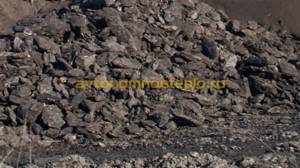
Hard coal – has a calorific value of 5500 kcal/kg. The percentage of carbon is at least 75%. Ash content from 2 to 4%. Most classic-type household boilers are heated with coal. For gas generator type equipment, not suitable due to humidity above 20%.
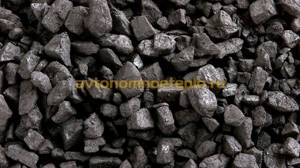
Brown coal – calorific value is only 3000 kcal/hour. When burned, a large amount of ash residue and coking substances are formed. Humidity is at 50%. Brown coal is not recommended for heating domestic boilers, due to the rapid clogging of the chimney and heat exchanger.
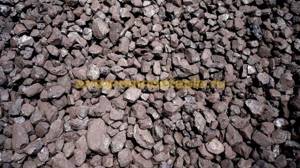
Anthracite – the humidity threshold is within 7%. It has high specific heat values, equal to 9000 kcal/hour. The share of ash carried away by gases from the coal boiler is no more than 7%. Manufacturers of heating equipment recommend heating gas-generating boilers with Anthracite. Coal is divided into several grades according to size: fist, nut, seed.

Is it possible to burn with coal briquettes?
Coal briquettes are made by pressing small fractions (dust). Special organic or mineral compounds are used as a binding element. The latter greatly increase the ash content of the fuel, but are cheaper. The most popular are coal briquettes, in which coal tar acts as a binder.
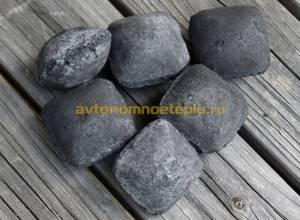
Heating with compressed coal has the following advantages:
- Easy to install in the combustion chamber.
- Good flammability.
- High calorific values, identical to anthracite.
- Easy storage and transportation - briquettes have a regular geometric shape, so they are easier to store and take up less space.
The only disadvantage of compressed coal is its high cost, which is approximately one third higher than the price of lump raw materials. The advantage is the ability to fire the boiler on coal, without contamination by combustion products.
How to burn with coal dust
The safest and most effective method of burning dust is considered to be using a special burner device.
Is it possible to burn with charcoal?

With all these advantages, charcoal has one serious drawback. The cost of a kilogram of purchased charcoal will cost almost 2 times more than the cost of hard coal. You can somewhat reduce the cost of raw materials by establishing its independent production. To obtain 1 ton of charcoal, you will need to burn about 10 m³ of wood.
How to reduce coal consumption
An increase in the rate of coal consumption, after several years of operation of the boiler, occurs quite often. The increase in costs is primarily due to clogging of the heat exchanger and chimney pipe with soot. It is recommended to completely clean the chimney and internal components of the boiler at least 2 times a year.
To reduce coal consumption, you need to fire the boiler correctly. To reduce the amount of soot, add fuel in layers - firewood and coal. This installation will ensure maximum heat transfer. Coal consumption changes depending on the boiler efficiency. Consequently, the higher the efficiency, the lower the fuel costs.
Another way to reduce coal consumption is to burn only high-quality fuel. Cheap raw materials, brown coal, have a large percentage of underburned coal, quickly clog the chimney and heat exchanger and, as a result, are more expensive than anthracite.
Features of boiler combustion in winter
Winter is the period of most active operation of the heating system. To prevent vital devices from breaking down in severe frosts, you should take care in advance to prepare the boiler for winter. To do this, the system is first cleaned of soot - chimney pipes, channels, grates. This will allow the heating to operate at maximum efficiency and extend its service life.

In winter, it is very important to maintain a stable temperature in the home, which means that you will have to periodically fill the firebox with raw materials. You can increase the efficiency of one bookmark by installing a heat accumulator
It is able to accumulate the heat produced by the system, quickly warming up the radiators and water supply. As a result, even after the fuel has completely burned out, the coolant in the system will remain hot for several hours. This is especially true at night, when it is not possible to regularly feed the boiler.
Coal selection
To have an idea of how to properly heat a long-burning boiler, you must definitely consider the fuel used for this. Coal is a natural material containing carbon and non-combustible elements. When burned, the latter become ash and other solid deposits. The ratio of components in the composition of coal can be different, and it is this parameter, coupled with the duration of occurrence of the material, that determines the grade of the finished fuel.
The following grades of coal exist:
- Lignite, which has a rather loose structure, has the shortest period of occurrence among all types of coal. It makes no sense to consider this material, since it is not suitable for heating private houses.
- More ancient deposits are brown and hard coal, as well as anthracite. Anthracite has the highest heat capacity, followed by hard coal, and the least efficient is brown coal.

When deciding what kind of coal to heat a boiler with, you need to evaluate the characteristics of a specific brand of raw material. Good coal for heating has a fairly high heat transfer and a long period of complete combustion - one load of fuel can burn for up to 12 hours, which allows you to reduce the number of loads per day to two. The presence of different types of coal on the market allows you to choose the most suitable material, depending on your financial capabilities.
How to heat so that coal burns as long as possible
The correct firing of a long-lasting coal boiler largely depends on the presence of control automation and, of course, the quality of the coal itself.
What coal is better to use
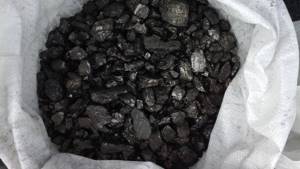
Manually operated boilers can operate on coal of any fraction. But it must be taken into account that the temperature of the gases in the chimney during long-term combustion is much lower than during direct combustion: the use of raw fuel can lead to the accumulation of excess moisture in the pipe and the formation of condensation - a black viscous liquid with a tar smell. Therefore, the relative humidity of coal (like any other solid fuel) should be no more than 15–20%.
Correct firebox
The combustion of a long-burning boiler is carried out according to the following scheme:
- Fuel loading - the distributor is raised to its original position so that it is just above the loading door, and all the coal is immediately poured.
- Kindling - dry wood chips and paper are placed on top of the coal, after which they are ignited and burn with the top door open and the air duct closed.
- Combustion - when the temperature in the heat exchanger reaches 50-60 °C, the door closes tightly, then the telescopic air duct regulator opens.
- Temperature adjustment - the boiler automatically enters the optimal mode, but if necessary, the temperature is adjusted by the air duct damper.
Upon completion of the full combustion cycle, it is necessary to remove sintered pieces of coal from the loading chamber, clean the ash pan and fill in a new batch of fuel.
Types of coal
Coal is of plant origin. For the most part, this fossil consists of carbon and non-combustible components, which turn into ash during combustion. Coal mined in different regions contains different amounts of such impurities. When ignited, the sulfur in the rock forms oxides that form sulfuric acid in the atmosphere. The largest proportion of sulfur comes from lignite. Based on its characteristics, coal comes in several types.
Coal is classified by age as follows:
- Lignite (youngest);
- brown (subbitominous) coal;
- coal;
- anthracite (the oldest deposits).
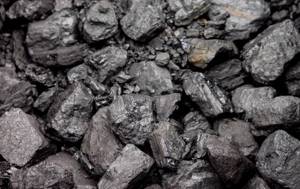
According to the content (B) of moisture and volatile impurities (MP):
- brown (subbitominous) coal: B=30-40%, LP > 50%;
- hard coal: B=12-16%, LP=40%;
- anthracite: B=5-7%, LP=5-7%.
Specific heat of combustion:
- brown coal – 3000-5000 kcal/kg;
- hard coal – 5000-5500 kcal/kg;
- anthracite – 7400-9000 kcal/kg.
Main disadvantages
Like any other equipment, they have their disadvantages. The production process uses quite complex automation, which can significantly increase the cost of the device. As a result, the price turns out to be 2 times higher compared to conventional designs that have the same power.
Among other things, due to the fact that the combustion process is automated, the owner of the equipment cannot interfere with the operation of the boiler while the coal is smoldering. This indicates that it is not possible to extend the combustion life in such a device. Sometimes this creates certain difficulties during operation.
Useful tips
For efficient and trouble-free operation of a coal-fired stove, follow a number of simple rules:
- To light coal, you cannot use flammable liquid mixtures - kerosene, gasoline, etc. It is also prohibited to use household waste.
- During kindling, be sure to monitor the process and move on to the next stage in time. It is convenient to observe the combustion through the door with heat-resistant glass. Many Teplodar stoves are equipped with this option.
- Either the ash pan or the flap must be open. When coal and wood are burning, the combustion chamber must be closed.
- The normal combustion mode can be determined by the color of the flame - it should be golden and the smoke should be transparent.
In addition, regardless of the type of solid fuel used, it is always necessary to monitor the draft in the pipe. You need to clean the chimney 1-2 times a month.
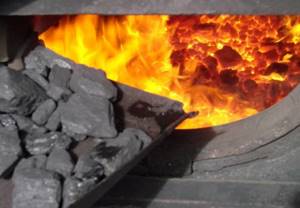
For efficient and trouble-free operation of a coal-fired stove, follow a number of simple rules.
Why is a solid fuel boiler an economical solution?
The choice of device is primarily correct for residents of dachas and cottages not connected to centralized heating. Even if such a connection is present, this unit will help to significantly save on gas bills; solid fuel is widely available and has a low price.
On the modern market you can find suitable equipment for planning a house of any complexity, even with a fairly large area. Having studied the above recommendations on how to use and maintain the boiler, these actions will take a minimum of time.
Ignition of coal in pyrolysis boilers
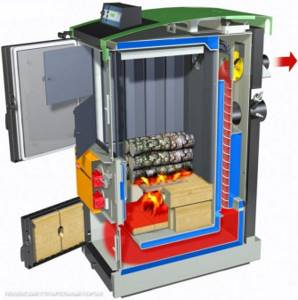
If you plan to fire boilers with coal, you should always pay attention to the type of grate, because there are special modifications for each type of fuel. Many manufacturers often include coal grates in the kit.
Ignition of coal depends on whether the long-burning device has been used before and whether it has automatic controls for regulating the air supply. The main element of automation is the fan.
Advantages and disadvantages
Boilers have their advantages and disadvantages that should be considered before purchasing.
Advantages:
- economical fuel consumption;
- the design in the combustion chamber allows increasing efficiency up to 70%;
- high-quality assembly;
- maintains the required temperature for a long time;
- ability to use a variety of fuels;
- automatic switching to long burning mode;
- affordable price;
- resistant to power surges;
- built-in security automation;
- There are three options for choosing power;
- the presence of a hob in some models;
- durable parts.
Flaws:
- sometimes marriage occurs;
- fuel burns out quickly;
- The power is not enough to heat a large house.
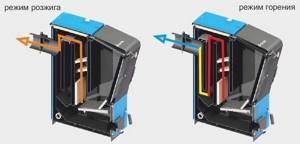
Consumption rates and rules for calculating the required volume of fuel
According to technical standards, 2 kg of coal is required to generate 10 kW of thermal energy. Knowing this, you can calculate its required volume using the formula:
M x =X/fuel calorific value (in this case 5 kW/kg)
- where M x is fuel consumption for a limited period of time (day, month, season);
- X – heat loss during the heating period, determined by the formula:
X = S×D×24×0.7×70
- where S is the heated area of the house, including all residential and utility rooms;
- D – duration (number of days) of the heating period;
- 24 – burning time (number of hours) of the boiler per day;
- 0,7 – average operating factor of coal boilers;
- 70 – average heat loss per hour (for a standard house in a temperate climate).
If we take the average heating period of 6 months (175 days) as a basis, then with an area of 100 m2 the heat loss will be X = 100 × 175 × 24 × 0.7 × 70 = 20,580 kW per season or 117 kW per day. Coal consumption for the same period will be equal to M1=20,580/5=4,116 kg and M2=177/5=23 kg, i.e. it will be necessary to purchase about 4.5 tons of coal.
Reference . Quite primitively, you can rely on the “living” experience of other owners of coal boilers: when the temperature outside is + 1 ... or more °C per day, 1 bucket of fuel burns, if - 5 ... - 15 °C, then 2-3 buckets, and especially frosty in winter - 20 ... and less °C, you will need to load up to 10 buckets* per day.
* a standard bucket (12 l) holds about 18 kg of medium-sized coal.
Alternative fuels
Today, the most popular type of fuel used for heating residential and industrial facilities is coal. If desired, it can be replaced with alternative raw materials:
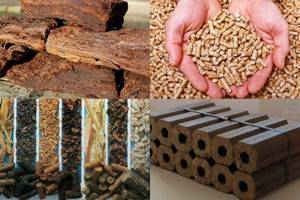
Peat
One of the most efficient types of fuel raw materials. Peat is suitable for stoves with special fuel chambers that increase draft during its combustion.
The material is produced in pieces and pressed briquettes. Peat moisture levels range from 22 to 40%, which leads to the formation of large amounts of ash. In terms of its calorific characteristics, it is significantly inferior to firewood, which is the main disadvantage.
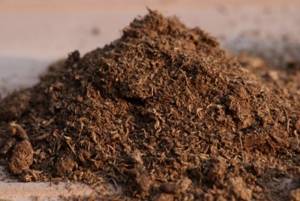
Pellets
Fuel pellets are produced from dry biomass (sawdust, wood chips, bark and wood dust) by hot pressing. These are small capsules whose humidity level does not exceed 10%, so they are an excellent fuel for a brick or metal stove.
Unlike firewood, pellets can burn for quite a long time, releasing carbon dioxide and water. They are distinguished by environmental friendliness, safety and high calorific value.

Electrical installations
In recent years, with the development of solar energy, when it became possible to receive free electricity, heating a home using various electric convectors and infrared heaters has gained popularity in the domestic market.
Such devices are reliable, quickly heat the room, and there is no need to lay a pipe system throughout the house; the homeowner will be spared the need to install heating radiators. The advantages of electric heating include the following:
- ease of maintenance;
- an electric boiler can also be used to heat water;
- reduction of costs for installation and purchase of necessary equipment;
- environmental Safety;
- efficiency and full automation of the heating system.
Electric heating systems usually include underfloor heating, which is often installed in the kitchen, bathroom and toilet. Today, there are various technologies for arranging a heated floor system, which are efficient and allow you to quickly heat rooms while consuming a minimum of electricity.
The only downside to this technology for heating a private home is the significant consumption of electricity, which leads to a significant increase in utility costs. There may also be problems with heat in the house during power outages, which can occur in remote villages, dachas and farmsteads.
Principle of operation
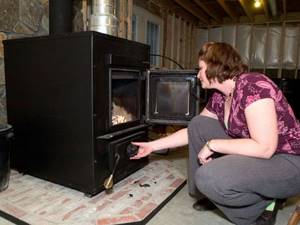
To figure out how to properly heat a boiler with coal, let’s understand the principle of operation of such devices. When coal burns, heat is released, which heats the heat exchanger with liquid. It is already, under the action of a pump system, supplied to the radiators, heating the air in the necessary rooms.
The equipment is quite simple. At the bottom there is an ash pit where slag and ash are collected. Above it are the grate bars, on which the fuel directly burns. The heat exchanger can be located either around the firebox or on top.
There are also air-heated coal boilers. They directly heat the air in the room. Their design is much simpler, since there is no intermediary in the form of a liquid coolant. They are used more for heating garages and industrial premises.
Long-burning models and pyrolysis devices have an increased level of efficiency. In the first, air is supplied from above, due to which only the top layer of fuel constantly burns. This allows you to load a lot of coal at one time, which will smolder slowly.
The best fuel for the boiler
Each type of fuel has pros and cons. The most expensive types are briquettes and pellets. They are convenient and safe to use, but not everyone can afford the cost of raw materials. The most economical and efficient type of coal is anthracite, which also has the highest cost of all coal varieties. Anthracite should be used with caution, as the fuel produces a high temperature, and the boiler elements may not withstand it.
The optimal type of coal for standard boilers is “DPK” grade coal - it has good efficiency indicators and a lower price. Firewood is less efficient than coal, but in areas where there is no access to other types of fuel, it will be a good alternative. Species such as birch, ash, beech and oak have the highest calorie content. But in any case, firewood will cost consumers more.
When choosing raw materials for solid fuel boilers, you should be guided by the manufacturers' recommendations - this way you can make home heating more efficient with minimal fuel costs. You also need to rely on location features. Sometimes even the cheapest raw materials will be unaffordable considering delivery to remote areas.
Every owner of an autonomous heating system should know how to properly heat a boiler. This will allow efficient use of solid fuel and extend the life of the heating system.
What are long-burning coal boilers for private homes?
A long-burning coal boiler is a modern heating device designed to generate thermal energy and subsequently heat the coolant by burning certain types of solid fuel, mainly such as hard and brown coal, anthracite, coal briquettes, etc.
Application and effectiveness
Solid fuel boilers do not require advance design of a construction project, so they are used everywhere - not only to create a new one, but also to modernize an existing indoor heating system (domestic, industrial and commercial purposes).

Working on coal does not imply dependence on network communications, so such boilers are ideal for private homes located in non-gasified areas. In such conditions, they most fully reveal their potential, because if desired, they can be adapted for preparing and heating water.
The efficiency of long-burning coal boilers reaches 80–87% (versus the standard 70–75%), but they cannot be called a very cheap heating option.
Comparison of the efficiency of long-burning coal boilers (table):
| Main resource | Heat of combustion, mJ (kW)/kg (m3) | Fuel price, rub./t (m3, kW) | Efficiency | Cost of kW of heat, rubles |
| coal | 22,1 (6,2)–27,6 (7,7) | 6000–7000 | 80–87 % | 1,04–1,20 |
| anthracite coal | 28,3 (7,8)–31,1 (8,7) | 8000–8500 | 80–87 % | 1,12–1,28 |
| natural gas | 33,5 (9,3)–36,5(10) | 5400–5700 | 90–95 % | 0,60–0,64 |
| chopped firewood | 11,2 (3,1)–14,3 (4,0) | 1500–1800 | 60–65 % | 0,69–0,80 |
| electricity | 3,6 (1) | 2.5–4.3 (tariff) | 98–99 % | 2,55–4,34 |
As can be seen from the table, the most profitable from a financial point of view are gas boilers. When burned, gas is almost completely converted into thermal energy, so there is no need to “waste” the waste that is inevitably generated when burning any solid fuel.
The cost of firewood is also lower than coal, but in the long term such heating still loses: since wood has lower density and mass, then with the same volume of the firebox, a full load of firewood (even taking into account the increase in burning time) lasts for 8–48 hours, and coal burns up to 1–7 days.
Design and principle of operation
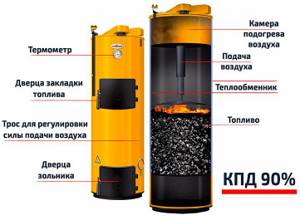
The design of long-burning coal boilers is generally similar to any other solid fuel units, but it has some features:
- loading chamber - occupies almost the entire internal space of the cylindrical body, which explains the increased capacity of the boiler;
- the entrance to the firebox is necessarily located in the upper third of the loading chamber, while the door itself can be located both vertically and horizontally;
- the air chamber is also a recuperator, due to which the air in it heats up and enters the combustion zone already hot;
- movable distributor - is a flat metal “pancake” necessary for dosing air on the fuel combustion surface;
- telescopic air duct - looks like a dynamically extending tube that connects the air chamber and the distributor;
- ash pan - is placed as standard in the lower part of the body, but no longer plays the role of a ash pan, as in conventional boilers, and therefore must be hermetically sealed;
- chimney channel - has a “broken” (knee) shape, so the smoke passing through it better accumulates heat and is discharged into the chimney already cooled;
- heat exchanger - “water jacket” is built into the boiler body; it (unlike the coil) surrounds the combustion chamber and the chimney duct along the entire perimeter.
At first glance, it may seem that a long period of continuous operation is achieved by increasing the loading chamber, but this is not entirely true.
The operating principle of such boilers is to implement “top combustion”: for this, air is supplied not from below - through a grate, as in conventional boilers (direct combustion), which operate on natural draft, but from above - through an air duct, using forced flow injection.
Under such conditions, the combustion process becomes completely controllable: it is active only in the air supply zone and almost does not affect the bulk of the fuel. In fact, combustion is reduced to layer-by-layer smoldering (without flame) - from the upper layers to the lower layers, which ensures more uniform heat transfer.
Visual process of long-term burning of coal.
Combined heating boiler ZOTA “Mix”
The main feature of the ZOTA “Mix” boiler is its versatility. It mainly runs on wood and coal, but in a pinch gas, diesel and electricity can be used. This flexibility is achieved by a special design that allows you to install different types of burners and operate equally efficiently on different types of fuel.
Photo 3: Combined heating boilers using solid fuel Zota Mix
Let's look at what other advantages the Mix solid fuel boiler has:
- The heat exchanger has an unusual X-shape, which ensures maximum heat removal, which in turn ensures high efficiency values.
- Operating efficiency is also improved by insulating the water jacket. Heat loss due to its use is reduced, and therefore efficiency increases. In addition to improving efficiency, insulation also improves fire safety.
- Easy access to the flue and a spacious ash tray make cleaning and maintenance very convenient.
- The optimal pressure for a heating system is 3 atm. In emergency cases, the device can withstand a pressure surge of up to 4 atm, without the danger of explosion as is the case with the installation of a cast iron solid fuel heating boiler.
- The operating power is adjusted by a built-in draft generator and a draft control damper in the chimney. Temperature and pressure are controlled via a thermomanometer on the front panel.
The ZOTA “Mix” model is available in four sizes with power from 20 to 50 kW. Their main characteristics are as follows:
| power, kWt | 20 | 31,5 | 40 | 50 |
| Room area, m² | 200 | 315 | 400 | 500 |
| Efficiency, % | 80 | |||
| Firebox volume, l | 35 | 45 | 63 | 79 |
| Heat exchanger capacity, l | 50 | 70 | 120 | 140 |
| Chimney diameter, mm | 150 | 180 | ||
| Chimney height, m | 6 | 7 | 8 | 9 |
| Price, rub | 34 900 | 38 700 | 49 900 | 54 500 |
Feedback from a real owner of the ZOTA “Mix” boiler about the experience of use:
Eldar Vladimirovich, Irkutsk
If you are looking for a solid fuel boiler that can, if necessary, operate on gas or liquid fuel, while maintaining high efficiency and remaining safe, then the ZOTA “Mix” is exactly what you need.
What coal to choose for the fire?
Fuel is selected in accordance with the recommendations of the boiler manufacturer.
The fact is that there are several types of coal, and they differ significantly in characteristics:
- brown coal. The most common and least quality: burns quickly, smokes and emits an unpleasant odor, produces a lot of waste: structure - earthy, color - brown or black, heat capacity: 16-22 MJ/kg, cost: 3.5-4.5 thousand rubles . per ton;
- coal. Black with a metallic or resin tint. Good quality and affordable price. There are several varieties, the most common is long-flame coal: heat capacity: 26-32 MJ/kg, cost: 5.5-7 thousand rubles. per ton;
- anthracite. Gray-black with a glass or metal sheen. The highest quality and most expensive: heat capacity: 32-36 MJ/kg, cost: 8-10 thousand rubles. per ton.
Using the “wrong” coal leads to cost overruns or damage to the heater. Thus, when anthracite burns in optimal mode, the temperature in the firebox reaches 2200-23000C. When loading such fuel into a boiler made of ordinary steel, designed for brown coal, it will quickly burn out.
Or you will have to “hold back” the combustion by cutting off the air supply, which will cause the efficiency of anthracite to drop sharply and the cost of purchasing this expensive coal will be unjustified.
Anthracite
Another example: long-flame coal, due to its high humidity, is unsuitable for a pyrolysis boiler - condensate forms abundantly in the chimney, mixing with combustion products and thereby turning into a viscous, tarry substance. Such heaters require gas coal.
There are toxic types of coal containing more than 2% sulfur. It is strictly prohibited to use them as fuel for furnaces and boilers: during combustion, sulfur oxide (sulfur dioxide) is formed, which poisons the air and destroys metal parts.
Lighting coal in the Stropuva boiler
The most common method is to pour fuel into a container, pour the flammable mixture into the duct and throw a lit match or burning wick into it. But anthracite will not ignite like that.

For it to light up you need:
- Pour in enough coal to reach the level of the bottom edge of the loading door. The consumption in this case depends on the volume of the chamber.
- Place a layer of dry small firewood on the fuel. Its thickness should be two-thirds of the height of the loading door .
- Light the wood and close the door.
- Wait until the fire burns. You can evaluate the intensity of combustion by looking through a special window made of heat-resistant glass.
- When the wood has burned down to burning coals, you need to open the door and add coal so that the top of the fuel is even with the top of the fire door.
- Fully open the air duct to obtain maximum draft.
- Wait 30-60 minutes.
- If the oven begins to heat up, close the air duct back to normal.
- The boiler must be heated in this mode until the coal is completely burned.
Sahara
A steam room equipped with a Sahara stove-heater can easily turn into both a traditional Russian bathhouse and a classic Finnish sauna. The stoves have a unique ergonomic design; they embody the principle of the “golden ratio” without violating proportions or smoothing corners. This shape allows it to fit well into almost any interior.

When developing the design of the Sahara stove, the principles of maximum comfort in operation with aesthetic appearance and operational efficiency were embodied. Heating of the stones is ensured from five sides; the fastest heating is achieved due to the successful placement of the chimney parallel to the axis.
The creation of a microclimate similar to a Russian bath and Finnish sauna is ensured by installing an additional converter.
Teplodar sauna stoves can be called, without a shadow of exaggeration, a work of stove art; all products are characterized by a stylish design, high functionality, reliable operation and ease of operation.
" What
Features of the Kuban stove
The temperature of the stones in the oven reaches 650 degrees. The stones themselves are closed, the heater is inside the heating chamber and flames are blazing on all sides. As a result, the water that enters the heater using a special dispenser begins to evaporate very quickly and, as a result, weightless steam is formed. The oven can also be open, in which you can select steaming modes to suit your taste.
- The oven is equipped with a door with which you can adjust the temperature
- The presence of a dispenser allows you to evenly distribute water inside a closed oven
- The heater can be open, which allows you to combine evaporation modes
- The heating chamber is super-rigid and has a special shape
The Kuban Teplodar stove has the best performance characteristics and is a very reliable device. With this stove, the steaming process will turn into a real pleasure and will please even the most demanding steamers.
What to pay attention to
The operation of any heating device using coal, wood and other semi-finished fuel products is inextricably linked with the ventilation system. The performance characteristics of heating equipment and the technological parameters of the entire heating system in the house depend on the quality of ventilation and the condition of the chimney.
The hood must operate in accordance with established fire safety standards.
A properly made chimney and cleaning of the heating device will ensure long-term operation of the solid fuel boiler at optimal operating conditions. Frequently changing one type of fuel to another can cause unstable operation of the heating unit, failures in the hot water supply system and heat supply. Each unit should have one main fuel, while other types can be used for a short time, as needed.
Types of coal for heating the furnace
Depending on the material
Material for coal-fired stoves is the main criterion for choosing fuel and stove. Let's look at these qualities in more detail.
For cast iron stove
Cast iron, due to its characteristics, easily tolerates high temperatures, so such stoves, including brick ones, are better suited for burning coal. Coals designated by the letters:
- "A" - anthracite;
- “D” - long-flame;
- “DG” is long-flame gas coal.
Expert opinion Pavel Kruglov Stove maker with 25 years of experience
This stove charcoal is better than other types. Furnaces equipped with long-burning systems are recommended to use long-flame and similar gas types. “DG” fuel is most suitable for pyrolysis types of furnaces - they have an increased formation of exhaust gases when burning fuel from an oxygen-depleted furnace atmosphere.
Brown coal types are not suitable for cast iron stoves - a high ash content will require cleaning the chimney after 20-25 days of operation.
For brick kiln
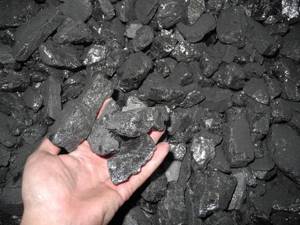
But some stove makers recommend heating such stoves with long-flame coal nuts. After the temperature has risen, anthracite is poured in. This option allows you to maintain the temperature in the room and save expensive anthracite. This bookmark lasts until the evening. At night, add a seed, which maintains the temperature in the house for 8-10 hours.
Important! Boilers and stoves of different designs may change their tastes, so go to the forum and ask what fuel is suitable for your equipment.
This way you can not only save money, but also allow the heater to work normally. When choosing, a lot depends on your capabilities. You can purchase grade A fuel and provide yourself with anthracite with excellent characteristics.
Expert opinion Pavel Kruglov Stove maker with 25 years of experience
But for heating small garden houses it is better to buy coke or even brown coals. They will cope with their task no worse than anthracite, but are much cheaper. The low price of lingite makes this fuel in demand among summer residents or rural residents.
For steel furnace
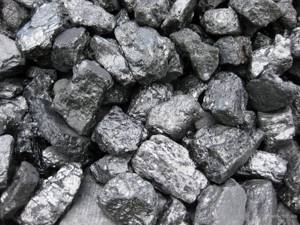
It is recommended to use expensive anthracite, but coke fuel is also suitable. It is more important to choose the size of its fractions and apply a mixed use scheme.
Let us note right away that such furnaces must be made of thick and only heat-resistant steel. If you make a potbelly stove from an old barrel, it may not be completed until the end of the heating season. High temperatures when burning fuel will require the purchase of expensive stoves with parts 8-10 mm thick. This increases the mass and its price.
If you purchased a steel coal stove, be sure to read the instructions. In it, manufacturers indicate its brands and types.
Important! Regardless of the material of the stoves, before lighting the unit, be sure to open the air damper on the chimney, the firebox door and the ash pan, and pull out the ash collection box. Only after making sure there is sufficient draft can you fill the firebox
To do this, it is recommended to use firewood for kindling, then pour a “nut” into the compartment and use a “seed” before night.
Depending on the purpose
This fuel can be used to heat a house, greenhouse or bathhouse. Let's look at the main installation locations and the choice of types for them.
For baths and saunas
If you like the smell of burnt wood, then this fuel is not for you. Coal burns without smell or flashes of fire. Coal for the stove in the bathhouse provides heavy and moist steam for the steam room. Let's also add the high level of toxicity of ash to humans.
These are the disadvantages of such fuel for a sauna. But high temperature in a short period of time is an advantage for large baths. For a small steam room, it is better to use old, time-tested fuel - firewood.
For home heating
The choice depends on the size of the room. For a small garden house, coke or even brown coal is suitable, but you will need to clean the chimney more often.
This fuel has a lower heating temperature than anthracite, but costs an order of magnitude lower. Long-flame and long-flame gas coal is preferable for heating medium and large houses. But the highest performance is achieved by using anthracite.
The choice depends on the money you can allocate to purchase fuel. Using the mixed coal stowage described above, you can significantly reduce the cost of purchasing coal. Unlike stoves in a bathhouse, the house needs to be heated constantly.
Therefore, you will need to accurately calculate the entire annual supply of coal and purchase several types of fuel.
Tips from experienced stove makers
If you have a stove or boiler in your home that runs exclusively on coal fuel, you will still have to light the heating device using paper and firewood. Only after the required temperature has been reached in the firebox can the coal itself be poured. If you don’t know what volume to take, then you need to focus on a layer of about 5-6 centimeters.
When this volume of material burns well, it will be possible to add the remainder in such an amount that the layer is already 15 centimeters. With this approach, you can be sure that the stove will light up well and there will be sufficient temperature in the house.
When kindling, the pipe valve should be moved back slightly, and the coal itself should be placed on the grate. At the moment when the fuel has already ignited well, it is necessary to open this valve to the maximum.
At the next stage, you should add a portion of small coal (if it is large, you will have to split it). Its layer will be approximately 5-8 centimeters, and the area should correspond to the grid. When the filling is completed, the firebox door should be closed, and at the same moment the ash pan should be opened. After the material flares up, the volume is increased to 12-20 cm.
Black fuel
As for subsequent portions of coal that will be added after the batch of material burns out, some rules should be followed:
- A new bookmark is made only when you are convinced that the previously filled coal has already flared up well enough.
- Before adding a new portion of coal, if the firebox doors are opened at this time, it is necessary to cover the ash pit.
- You should not allow the material to burn out right up to the grate; combustion should be uniform throughout the entire layer.
If you pay attention, you will notice that purchased coal comes not only in large pieces. It may contain small particles, as well as typical dust.
To prevent it from combining into a single layer during combustion, the material should be moistened with water before laying.
The same applies to those who use fatty coal of the PZh or Zh brands. However, the volume of water should not be large, because the material burns better in a dry form. When lighting a stove, fuel of the PS and SS grades, where small elements predominate, must be moistened with a slightly larger volume of liquid.
There is also skinny coal, which is marked with the letter T; it is this that should be moistened generously, but long-flame material is only sprayed to remove dust. As for the “Anthracite” brand, it does not need to be wetted at all, only if it is dusty, it is lightly irrigated with water.
When the combustion process itself is underway, the combustion chamber door must be closed. It should be opened only when it is planned to throw in a new batch of coal. Unlike firewood, this material does not need to be turned over as often, otherwise the firebox will cool down and some of the material will fall through the grate.
Now it becomes clear what is the best way to heat the stove and how to do it correctly. Of course, the process may not work out the first time, but don’t despair, because after two or three attempts all actions will be performed automatically, and the house will be filled with comfortable warmth and the pleasant crackling sound of burning coal or wood.
Bath stoves Termofor large selection
Siberian bath stoves are widely known not only in our country, but also abroad. The product range of this company is constantly updated. The products are characterized by high functionality, compact dimensions and ease of operation. The attractive appearance of the stoves fits into any bath interior: from classic to the most stylish.
On the forums you can read very different reviews about Termofor stoves, but most of them are positive. Some of them:
And I like my Angara stove. We are on Normal for the 2nd year. We heat it with peat briquettes, it’s very warm and there’s not a lot of fuss with the stove.
Bath stoves Termofor
We bought a MERANO stove (imported) for the house, and a GEYSER bath for the same price. Both the house and the bathhouse are approximately the same area (5x5 and 6x4). So, the Thermofor GEYSER heats the room twice as fast, I regret that I bought such a stove for the house (I thought since it was imported, it was better)! The beauty of the stove is not the only advantage! Let's see how it shows itself over time!
I decided to share my impressions. I have a Termofor sauna stove. I recently bought it for a sauna, it’s called Vitruvia. It’s probably hard to call it a stove anymore, because it’s very sophisticated. However, 21st century #8230 It has a very large screen built into it, it’s convenient to watch the combustion and it’s just beautiful. Diagonal 58 cm! It does not darken, it practically does not even need to be wiped (convenient for lazy people and bachelors) The oven heats up very quickly, the steam room is just what you need. In appearance it fits perfectly into a sauna. The stove itself is small, as I chose for my cubic meters
Do you have a strange smell when firing the stove? I myself recently bought, not this one, but from a different manufacturer. Now I’m thinking: will it fade or not?
@Alkard The strange smell is the machine oils that are used to lubricate everything at the factory. I had an odor the first time I used it. Then there were no problems.
Reading reviews about Termofor stoves, you understand that for the most part customers are satisfied with the choice.
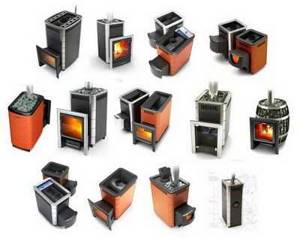
Types of sauna stoves produced
Termofor's range of sauna stoves is impressive:
- Osa and Osa INOX are ultra-compact stoves for Russian baths with steam room volumes from 4 to 8 m 3 .
- Compact and Compact INOX – a wood-burning stove for a Finnish sauna, designed for steam rooms from 8 to 14 m 3 .
- Shilka is a wood-burning stove for Russian steam rooms of small volumes - 6-12 m 3.
- Tunguska – middle-class wood-burning sauna stoves for heating rooms from 8-18 m 3 to 12-24 m 3 in the XXL modification.
- Tunguska and Tunguska Vitra are a new version of the popular stove. The firebox has been improved and changes have been made to the design of the heat exchanger for heating water.
- Angara is a stove for a Russian bath, suitable for medium-sized steam rooms of 8-18 m3. All the power of the stove is aimed at heating the stones in an open, unventilated heater.
- Angara is a powerful stove for a Russian steam room with a closed heater.
- Aurora is a powerful stove for medium-sized Finnish dry-air saunas (8-18 m3) with a chimney shifted towards the firebox.
- Geyser is a stove for a Russian bath with a two-stage steam generation system for steam rooms of 8-18 m 3.
- Vitruvia is a fireplace stove with a large glass door (58 cm diagonally) for dry-air steam rooms 8-18 m 3 .
- Sayany - mesh stove for Finnish sauna 8-18 m 3.
- Biryusa is a vertical sauna stove with a closed heater. Suitable for Russian steam room with a volume of 8-18 m3.
- Karasuk is a budget stove made of structural steel 4-6 mm thick.
- Skoroparka is an original wood-burning stove for a Russian bath, designed for steam rooms of 12-20 m 3.
- Kalina is a large stove for a Finnish sauna - designed for a volume of 18-30 m 3 .
- Hekla is a sauna stove for commercial use. Suitable for steam rooms 30-50 m3.
"Shilka"
The wood-burning stove is intended for steam rooms with a small volume - from 6 to 12 cubic meters. Double-walled, with an open heater at the top and a chimney located in the center. It can be made both with a hot water tank (built-in 24 l or mounted) or without it. Firebox with a volume of 43 liters made of heat-resistant steel. The combustion tunnel is extended for embedding into a wall or a regular door without extension. Provides “Russian steam room” bath mode, made of heat-resistant steel with a warranty period of 3 years.
"Biryusa"
The tall and narrow stove for the Russian steam room Biryusa has a closed heater that can hold up to 30 kg of stones. Made of structural steel, has a built-in stainless steel water tank. The updated furnace layout prevents premature boiling of water (the main drawback of the previous design).
Sauna stove Termofor Biryusa
"Wasp" and "Wasp INOX"
The smallest wood-burning stove, the recommended steam room mode is Russian. Designed for mini-steam rooms with a volume of 4 cubic meters or more. up to 8 cubic meters Made of structural steel with a 1-year warranty in the Osa modification and heat-resistant chromium steel in the Osa INOX (3-year warranty).
How to use solid fuel units correctly
Coal boiler operation
The operating principle of a solid fuel boiler is known, and the issue of choosing the type of coal has been resolved. All that remains is to learn how to properly light the stove. There are several simple rules that everyone who chooses the described installations for organizing heating of a country house must learn.
Remember! First, the stove must be prepared for lighting, then fuel must be correctly loaded into it. During its combustion, the installation must be closely monitored, removing combustion products in a timely manner.
Let's look at all these points in more detail.
Preparing the stove for lighting
If the stove in a country house is used occasionally, before starting its operation, for safety reasons, it is necessary to exclude the presence of cracks inside the masonry.
Why are they dangerous? Through them, combustion products and carbon monoxide can enter the room, which must be removed outside using drafts. If such a defect is discovered, it must be eliminated before kindling by covering the cracks with a mixture of clay and sand. Otherwise, when heated, the cracks may increase in size even more. And this will lead to dangerous situations.
When inspecting the stove from the outside, we remove flammable objects away from it and clean it inside. We remove the ash and slag with a shovel, freeing the internal compartment. It is advisable to wipe the inner walls of the firebox with a dry cloth. If this is not done, then during kindling the dust will begin to burn, filling the room with an unpleasant odor.
The coal stove needs to be lit several times a day. The duration of one fire should not exceed two hours. For loading, it is better to use well-dried medium-fraction coal.
Note! Wet fuel produces steam when burned. It forms condensation, which settles inside the chimney. Mixing with soot, condensate forms coke, which gradually clogs the chimney passage, narrowing it
And this leads to problems with traction
Mixing with soot, condensate forms coke, which gradually clogs the chimney passage, narrowing it. And this leads to problems with traction.
Do not use household waste or flammable liquids such as gasoline or kerosene to ignite coal. Do not leave the stove unattended while it is burning. This rule must be observed especially strictly if there are small children or animals in the house.
How to properly melt coal?
Laying solid fuel boilers
The stove must be lit as follows:
First, we place sheets of newspaper or any other dry paper on the bottom of the firebox. On top of it we place a layer of small wood chips. And on them we stack small firewood, for example, birch logs. To make them burn faster, they need to be folded in the form of a well or a small hut. Set fire to the paper. We close the oven door and open the ash pan. Using it, it is easy to control the intensity of fuel combustion. The stronger the air flow, the faster the stack of firewood burns out. After the firewood has completely burned out and only a pile of smoldering ash remains, you need to lay a 15-centimeter layer of fine coal directly on it.
Note! When opening the door to load fuel, be sure to close the vent. When a 15-centimeter layer of coal burns well, we place larger coal directly on it and build a cushion 60 cm high. It is useful to stir the burnt fuel thoroughly beforehand, which will improve air circulation and prevent caking of the coal mass
Coal can be placed by opening the firebox door
It is useful to stir the burnt fuel thoroughly beforehand, which will improve air circulation and prevent caking of the coal mass. Coal can be placed by opening the firebox door
When the 15-centimeter layer of coal burns out well, we place larger coal directly on it and build a cushion 60 cm high. It is useful to stir the burnt fuel thoroughly beforehand, which will improve air circulation and prevent caking of the coal mass. Coal can be placed by opening the firebox door.
Note! Low-quality solid fuel tends to coke. Therefore, experienced stove makers advise laying a layer of coal with layers of firewood. Such a multi-layer cake will allow the unit to burn well and give off the maximum amount of heat.
Such a multi-layer cake will allow the unit to burn well and give off the maximum amount of heat.
To properly light the stove, it is better to do this - open the ash pan and let the paper with the wood chips burn out using natural circulation. This will allow the chimney to warm up well. As the fuel burns, the draft will increase, so you then need to close the ash pan and turn on the fan.
How to melt correctly?
A coal stove or boiler is heated in the following sequence:
- open the firebox door and close the ash pan;
- Place paper on the grate and wood chips, cake or other flammable material on it. A small amount of firewood is then placed in the form of a hut or well. Set the paper on fire;
- close the firebox door and open the ash pan. In the future, each time before opening the firebox door, the vent is closed, and after closing the door, it is opened;
- after the wood filling is burned, a thin layer of fine-grained coal is placed on it;
- After the coal burns, it is stirred with a poker to prevent caking. Otherwise, air will stop flowing into the firebox;
- The main fuel is placed on the burned-out fine coal - coarse coal with a layer thickness of up to 60 cm;
- The ash flap is opened slightly so that the optimal combustion mode is established in the firebox.
When lighting a boiler with forced air supply, instead of opening the damper, turn on the fan controller and set it to the desired coolant temperature.
Cleaning the firebox and pipe
When coal burns, tar and soot are released, which settles on the walls of the combustion chamber and chimney. The boiler can only be cleaned when it is cool. To do this, we stop adding fuel. When the flame goes out completely, open all the dampers and wait for everything to burn out.
It is important to note that this will lower the temperature in the heated room.
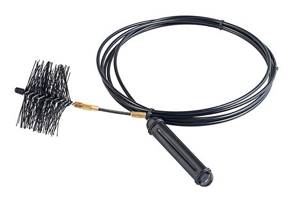
Boiler cleaning brush
For mechanical cleaning, a lathe, various scrapers, pokers, metal brushes and spatulas are used. There are special windows in the case for access inside. For particularly difficult places, you can attach a scraper to a long handle. It is convenient to clean the chimney with a brush tied to a cable.
Chemicals are also used that are added to the fuel. Reacting with soot, they come out with smoke.
Is it possible to leave dead coals in the stove?
Many homeowners are interested in a completely logical question - what to do with the extinct coals that remain after fuel combustion?
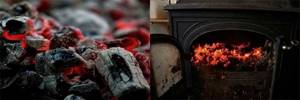
After finishing the fire, you need to make sure that all the coals are really extinguished and do not give off flames. Extinguished coals can be left in the fuel compartment until the next filling. They will help you quickly and easily light up an already cooled stove and reduce overall fuel consumption. At the same time, it is recommended to complete the process of heating a potbelly stove or boiler 1.5 hours before going to bed or leaving the house.
If there is no free time for the fuel to burn out, the remains are laid out in a free container and filled with water.
Operating principle of a coal boiler
Each unit operating on coal fuel has individual operating characteristics. For example, some options are equipped with automatic mechanisms, others simply operate under the influence of the human factor.
The operating principle of TT equipment is quite simple. Its interior consists of two chambers: the upper one is intended for the firebox, and the lower one is for collecting slag and ash, which are cleaned as the chamber becomes dirty. In order to properly heat the boiler, it is enough to purchase the necessary material. If you do not use chemical mixtures, then you can solder the boiler using paper and dry brushwood, and after it flares up well, add coal.
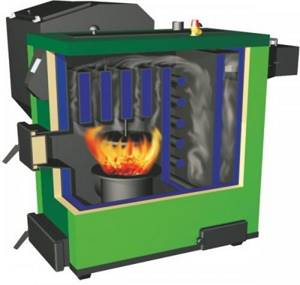
How does a coal boiler work?
If you don’t have the opportunity to regularly look into the firebox or don’t want to, you can use long-burning equipment. In such situations, the question of how to properly heat a coal boiler will disappear without a trace. However, such stoves are several times more expensive than ordinary stoves intended for home use.
There are solid fuel boilers with automation on sale, let’s look at their advantages:
- automatic mechanism helps control the combustion process;
- regulates the supply of sufficient oxygen to the firebox;
- the normal operating temperature of the heating system is optimized;
- The heating of water in the pipes for each room is controlled equally.
Preparing for kindling
To ensure that coal heating equipment is safe and efficient, you need to pay attention to the following points:
- If the boiler or stove is rarely used (for example, seasonally), then before use you need to make sure that there are no masonry cracks. Even small cracks in the structure of the furnace provide a wide path for carbon monoxide to escape into the room, where it can seriously harm people present there. To get rid of this problem, all cracks must be covered with a mixture of sand and clay before heating the solid fuel boiler.
- Before lighting the boiler with coal, you need to inspect it visually. There should be no flammable objects near the heating equipment. The internal surfaces of the structure must be cleaned. It is advisable to wipe the firebox with a dry cloth so that the burning dust does not emit an unpleasant odor that will enter the room.
- Coal stoves need to be heated several times a day, and the duration of each kindling should not be more than two hours (for more details: “How to heat a stove with coal and which coal is better”). Dry coal of medium fraction is best suited for heating.
- To ignite coal equipment, you cannot use various flammable wastes and liquids such as kerosene. In addition, the stove must be supervised during the combustion process, especially if there are animals or children in the house.
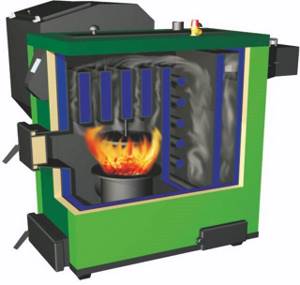
The described points are not particularly difficult and make it possible to make the operation of boiler equipment safe.


